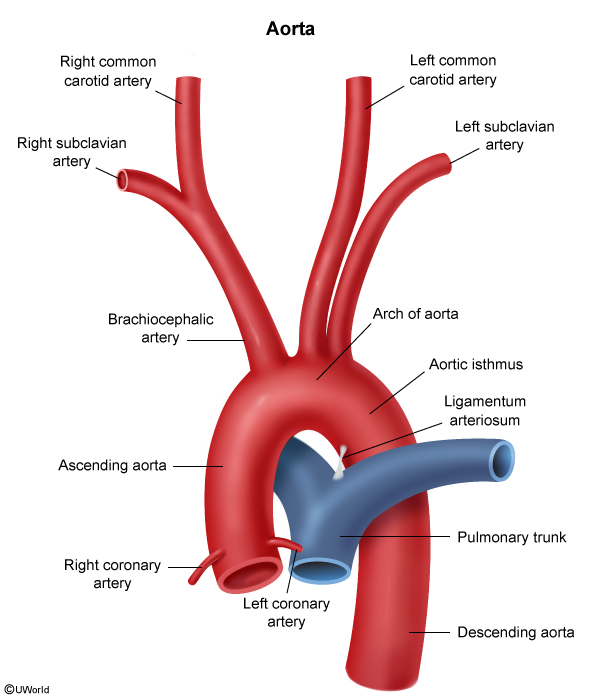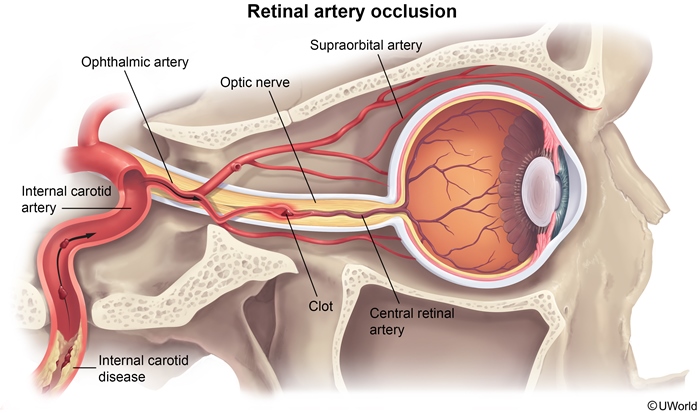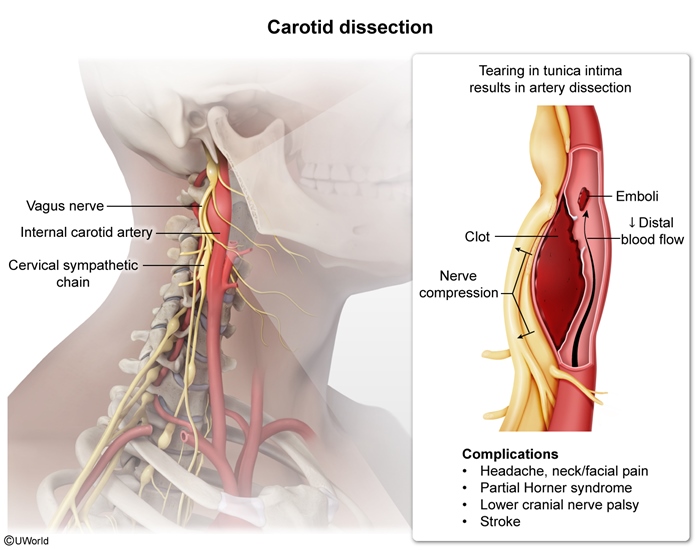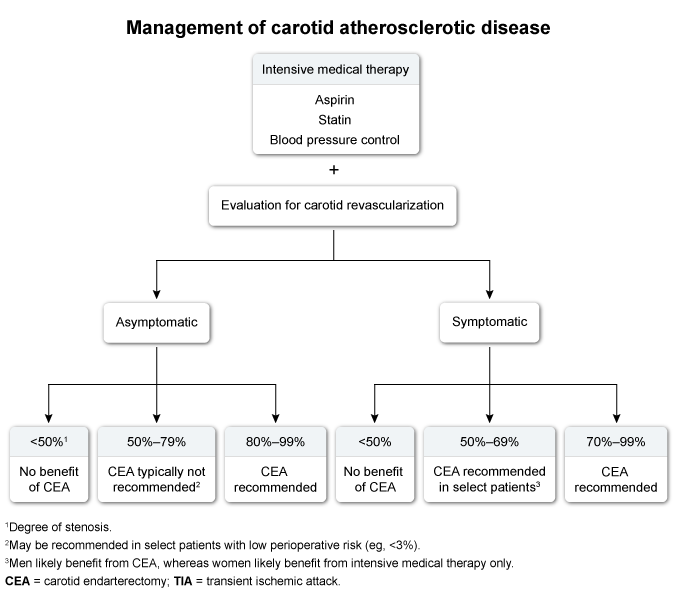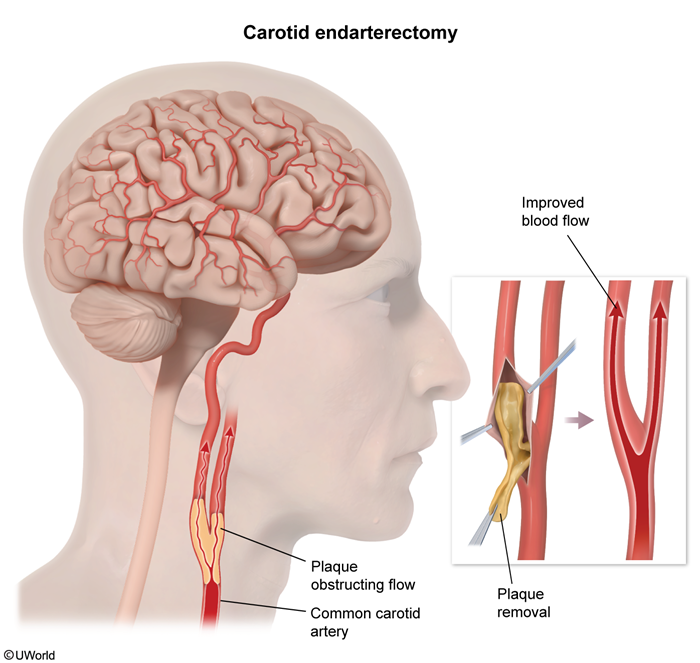Carotid Artery Stenosis
Article Sections
Introduction
Carotid artery stenosis refers to the narrowing of the carotid arteries, typically due to atherosclerotic plaque formation. These arteries supply oxygenated blood to the brain, and the dislodging of clots can lead to transient ischemic attacks (TIAs) or ischemic strokes. The condition can be asymptomatic or symptomatic and is a significant contributor to cerebrovascular morbidity.
Anatomy and pathophysiology
The left common carotid and subclavian arteries branch directly from the aortic arch; the right common carotid artery branches from the brachiocephalic (innominate) artery, which branches off the aortic arch (Figure 1). The common carotid artery then bifurcates at the level of the C4 vertebra into the external carotid artery, which supplies blood to the face and neck, and the internal carotid artery, which supplies blood to the brain.
Continue Learning with UWorld
Get the full Carotid Artery Stenosis article plus rich visuals, real-world cases, and in-depth insights from medical experts, all available through the UWorld Medical Library.
Figures
